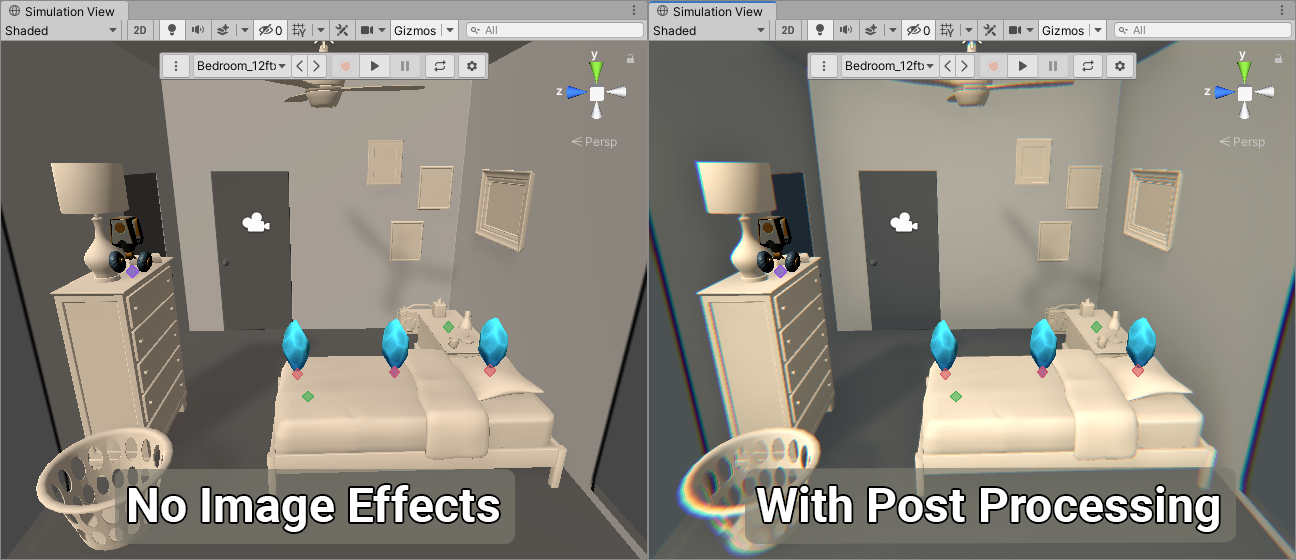Graphics
This page provides more information on MARS rendering support and features in the Editor.
Composite Render
The Composite Render is the special render setup for MARS that allows the Simulation view to render the Simulated Environment separately from and occluded by the Simulated Content in the editor views. This is achieved by the Simulation Scene being broken into two preview scenes with a camera rendering each scene. This supports the builtin render modes fully with partial support through fallback options for Scriptable Render Pipelines (SRP).
Composite Render Options

Options for the Composite Renderer can be found in the Project Settings Window accessed under MARS > Composite Render Options. This contains options to enable fallback rendering mode Use Fallback Composite Rendering. When enabled the composite rendering is simplified to use a single simulation scene and camera. This provides wider support to different rendering APIs and Scriptable Render Pipelines (SRP). The Use Camera Stack In Fallback keeps the single simulation scene setup but uses the composite camera as a child of the target camera with a lower sort depth to be rendered before the target camera on the camera stack. This mode is not supported in the Scene or Simulation View and will still use the base fallback setup.
Supported Rendering Modes
| Feature | Supported |
|---|---|
| Forward | Yes |
| Legacy Differed | Yes |
| Differed | Yes |
| Post Processing | Yes |
| VR | In research |
| VR Single Pass | In research |
| URP | Yes - Fallback Composite (no camera stack) |
| HDRP | In research |
| Custom Render Pipe | In research |
Post Processing

MARS supports Post Processing version 2.2.2 and greater. MARS uses this to enhance the rendering of the Simulation views with color correction, ambient occlusion, and chromatic aberration applied only to the simulated environment. These effects provide some extra separation of the Scene content on the simulated environment, to better represent what you see on the target device.